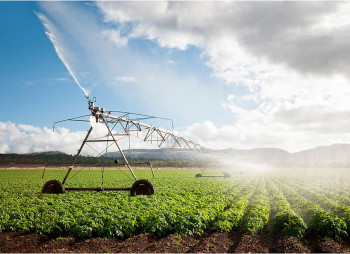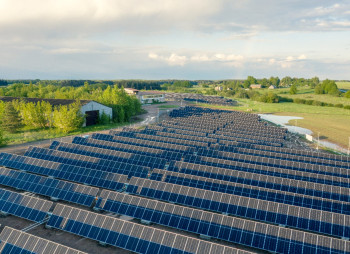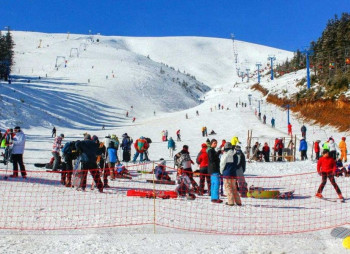In present day Ukraine, there are very few topics as vehemently debated as land market reform. Indeed, the very mention of the potential liberalization of the land market usually results in an outcry which can hardly be referred to as discussion in any sense of this word. Nonetheless, the number of landowners willing to sell their land is steadily increasing. Both the society and the politicians are growing tired of the long overdue reform and the injustice of the ban on sale of privately held land. The international donors of Ukraine, in particular, the IMF, are also impatient at the lack of progress in the land market.
In view of the looming land reform, it is important to understand the current regulation and practice in the land market. This knowledge provides valuable insights into the life after introduction of free sale of land. Many a myth are ruined by reading what the land law says today. To give just one example, there is sufficient legal protection of tenants in the case of sale of leased land plots. Importantly, transfer of agricultural land is achievable even despite the moratorium.
It is further crucial to understand which legal issues are to be addressed for the land market to start functioning properly. Absent thoughtful regulation, the long awaited land market may turn into a land bubble. This might have devastating effect on agribusiness rocked by wave after wave of land speculators. Lured by the prospect of quick enrichment, traders in land will try to collect as much land as possible from whoever will be willing to sell it. One of the major obstacles will be farmers leasing the target land. Land encumbered with land lease would cost substantially less. Few investors will be happy to wait until the end of land lease and thus pay the full market price for the temporarily unavailable land. It is not improbable that landowners will try to squeeze tenants off their land plots just to fetch a higher price for it.
Which Land Is Currently Not For Sale?
The Land Code of Ukraine of (Land Code) provides for three types of agricultural lands which may not be sold by their legal owners. These include agricultural land formally designated for (i.e. the Moratorium):
- commercial/commodity agriculture; and
- private/individual agriculture and parceled from the land mass previously cultivated by state or collective farms; and
- any agriculture use in case of state owned or municipal land plots.
According to official statistics, the Moratorium covers approximately 96% of Ukrainian arable lands, as follows:
- up to 29,2M hectares (72,9M acres) of privately owned agricultural land (of both commodity and individual designation); and
- up to 10,5M hectares (25,9M acres) of state or municipally owned agricultural land.
Contrary to the popular beliefs, not all the agricultural land is subject to the Moratorium. Thus, the ever growing body of land privatized by individuals (with the maximum area of 2 ha available under such procedure) is freely transferable under Ukrainian law.
Restrictions on Purchase of Land
The Moratorium set forth by the Land Code effectively prohibits sale and purchase agreements, preliminary purchase agreements or any other instruments aimed at disposal of the land plots in future, i.e. in case of lifting the Moratorium. The latter means that preliminary sale agreements, power of attorneys or other similar documents concluded prior to lifting of the Moratorium may be deemed void ab initio under Ukrainian law. In addition, the Moratorium prohibits any change of the formal designation (allotment) of related land plots, thus, not allowing to pull a land plot out from the Moratorium limitations.
At the same time, land pots under the Moratorium may be inherited, swapped or bought-out for public needs.
Are There Ways to Buy the Land Under Moratorium
With the number of landlords willing to dispose of their land plots steadily growing, both agribusinesses and private investors are actively buying the offered land. Indeed, the land sale is on the increase. The Moratorium makes the parties look for creative forms of sidestepping it.
Presently, there are two main strategies pursued by the parties willing to transfer land ownership:
- long-term land use agreements:
- land lease agreements for the maximum allowed term of up to 50 years; and
- emphyteusis agreements allowed under Ukrainian law without any limitation on the maximum period of land use (in contrast to land lease agreements). Emphyteuses are often concluded for the period of 100 to 500 years. Furthermore, Ukrainian law allows sale (transfer) of the right of emphyteusis from one tenant to another without consent of a land owner (freeholder). The above makes emphyteusis an effective substitute of land sale. - transfer of ownership (freehold) on the basis of land swap agreements. There is no clear cut regulation of such arrangements. However, the current market approach is to swap land plots, which are (i) located within same district or municipality and (ii) designated for agricultural use, irrespective of the areas of the swapped land plots.
Unfortunately, the Ukrainian authorities do not have any consistent policy in their treatment of the above arrangements. While they agree on the lawfulness of long-term land lease agreements, both emphyteuses and land swaps quite often attract criticism. Furthermore, land swaps, being once the most popular land transfer tool, were recently challenged by the Supreme Court of Ukraine. The court revised its previous case law on the basis of more than creative interpretation of the statutory provisions regulating the Moratorium.
Absent watertight legal instruments for transfer of land under the Moratorium, lifting the Moratorium appears to be the only viable response to the ever growing number of landlords willing sell their land plots.
What are the Key Issues Related to Land Reform
More than a decade of debate around land market liberalization crystalized the few issues which are essential to the proper functioning of the land market.
These include the following:
- permitted buyers;
- maximum number of hectares which might be owned by one permitted buyer;
- minimum sale price;
- preemption rights (right of first refusal); and
- restrictions on resale of land.
Permitted Buyers. It is expected that the deal breaker for any parliamentary vote on the land market would be the issue of permitted buyers. Land market is a hard sell of and by itself. Even fewer people would be willing to extend the right to buy agricultural land beyond nationals of Ukraine. The majority of Ukrainians have an irrational fear of the foreigners buying all the land and evicting the aborigines. Consequently, it is widely believed that any land market reform will provide for at least an interim period of 5 or more years during which only Ukrainians will be able to buy and sell agricultural land. Of course, the Parliament may at any later time recognize the need to permit purchase of agricultural land to Ukrainian legal entities or foreign nationals.
Restricting the purchase right to Ukrainian nationals only has an additional benefit of limiting the cash flow into the land market. While there are many investment funds and private investors willing to buy agricultural land in Ukraine, few of those will be willing or even able to use Ukrainian nationals as a vehicle for such investment plans. This might prove beneficial at the start of the land market reform. Arguably, the land market will be less overheated and thus less likely to spin out of control.
It appears quite likely that legal entities registered in Ukraine would also be included among permitted buyers. However, there may be restrictions on the beneficial ownership of such entities.
The Ukrainian society is reluctant to grant foreign residents the right to own agricultural land. It is unlikely that such possibility will arise in the nearest future. Nonetheless, following the interim period when fears of the unknown land market subside, foreign ownership might well be ushered in.
Land Bank Cap. The issue of permitted buyers goes hand in hand with the maximum land bank limitation. Although the latter is less controversial, the popular approach is to limit the land bank held by one individual or legal entity. For individuals, the suggested caps range from 100 to 1,200 ha, for legal entities from 500 to 10,000 ha.
There is little theory behind any of the above limitations. As in the case of permitted buyers, it is highly likely that caps will be increased (at least for the legal entities if they are ever to be allowed to buy agricultural land).
Minimum Sale Price. The rationale behind the fixed minimum sale price is to protect unsophisticated landowners. It is believed that the often poor rural landowners might be pressed to sell their land plots substantially below their market value. While case studies do not always confirm this theory, the popular consensus is to include such protection.
The problem with the minimum sale price is that it can substantially slow down (and even block) the land market reform. If the benchmark is set to high, there will be few investors willing to overpay. Unfortunately, in such cases landowners will arguably suffer even more. Instead of being underpaid, they will not be paid at all. While there are several approaches to setting the minimum sale price, it appears that the easiest and least subjective is to use the market valuation (as is the case with all the real estate apart from land).
Preemption Rights. In contrast to the previous issues, preemptive rights should protect the agribusiness more than landowners. If the land is to be put to its best use, then arguably those who managed it properly should be the first to buy it. Similar rights might have owners of adjacent land plots or family members.
While Ukrainian law provides for the right of first refusal of the lessee of the land plot, it is not clear whether such legal safeguards will survive after the start of the land market reform. At the same time, their absence might have a major effect on agribusiness. Upon expiry of land lease, there will no longer be any guarantee that the farmers working the land will be able to stay even if they are ready to match the highest bidder. Needless to say, this might also impact the ability of agribusiness to raise capital on public markets.
Restriction on Resale. These provisions are introduced to control land speculation. Their aim is to discourage any land purchase focused solely on subsequent resale. To that end, the law might provide for heavy taxation of the land resale proceeds. Often, the applicable rate during the first years after the purchase might peak at 50 per cent. The tax burden will decrease with every passing year flattening out after 7 to 10 years of ownership.
What to Expect Post Land Liberalization
As many other Ukrainian reforms, the land market liberalization is long overdue. It comes at the time when the arable land is in short supply and in high demand. Even without free land market, agricultural land is at the center of multiple conflicts among agribusinesses and landowners. The price of land lease has been steadily growing over the past ten years. Currently, medium term lease of prime agriland can easily fetch USD 800 to USD 1,500 per hectare.
Opening the sale of agricultural land will further fuel the price of land and intensify the competition for it. Unless carefully managed and controlled, the land market might become as volatile and unpredictable as it used to be prior to 2008 (in the case of land for residential construction in and around the city of Kyiv and major metropolitan or seaside areas in Ukraine). Given the unfettered influx of cash, land speculation will quickly overtake the market.
Agribusiness is set to be hit most by the land market reform. Farmers will have to decide whether they want or need to buy every land plot offered for sale by their landlords. This will create a massive drain on the finances of their businesses. (Various opinion polls indicate that around 20 to 30 landowners are willing to sell their land as soon as the ban is lifted.) The unhappy or greedy landlords might try to force agribusinesses off their land. This creates a substantial business interruption risk and will require a swift and firm response from the affected agribusinesses. Absent sufficient protection from the law enforcement agencies, private land wars might ensue.
On the positive side, liberalization of the land market will improve land management. The land market will kickstart land aggregation with few landowners collecting all or the majority of the land plots in each village. Several years down the line, agribusinesses will have to deal with just several individual landowners, instead of thousands they have to humor at the moment.
The land market would resolve or at least expedite resolution of several problems plaguing land management in Ukraine. Land aggregation will make it possible to lease whole fields without facing sabotage from the lessees of any interrupting land plots, which is currently often the case. Furthermore, contiguous land masses accumulated by individual landowners will also make any field roads redundant. The roads would be sold by the state ending the years of controversy over their use and the relevant fiscal liabilities.
Both medium and long-term effects of the land reform should be positive. More importantly, whatever the negative consequences, which there would be quite a few, there appears to be no viable alternative to the land market liberalization. Both land lease and any other forms of land use, outside of free market, have proved unreliable in modern day Ukraine. More than fifteen years of the Moratorium demonstrated that its overall effect on the land management is largely negative.






